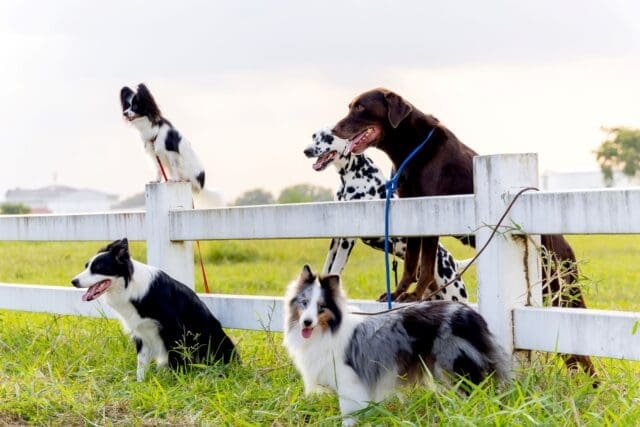Quick Guide to Understanding Pet Behavior

Understanding pet behavior is key to nurturing a harmonious relationship and ensuring their well-being. Whether you’re a first-time pet owner or have shared your life with animals for years, understanding the intricacies of pet behavior can lead to a deeper connection with your beloved friend.
In this comprehensive guide, we’ll take you through the basic pet behaviors and offer insights into the fascinating world of animal companions.
The Basics of Pet Behavior
Before we dive into specific behaviors, it’s essential to understand some fundamental principles:
Communication
Pets communicate their needs, feelings, and desires through body language, vocalizations, and actions. Paying attention to these signals is crucial for responding appropriately.
Individual Variation
Just like humans, each pet has a unique personality and temperament. What may be typical behavior for one pet may not apply to another.
Adaptability
Pets are adaptable creatures. They can learn and change their behavior through training, socialization, and exposure to different environments.
Quick Guide to Understanding Pet Behavior
Now that you know the basic pet behaviors, let’s talk about the common behaviors you will observe based on different types of pets;

1. Common Canine Behaviors
Let’s start with our loyal canine companions. Dogs rank among the most popular pets in the world. It’s estimated that 65.1M of households in the US alone have a dog. So, what are the most common behaviors to watch out for;
Tail Wagging
There is a popular belief that a dog wagging its tail means they are happy. Well, sorry to burst that bubble! It’s not always right.
Dogs wag their tails for varying reasons. From happiness to alertness to aggression. The position, speed, and direction of the wag can convey various emotions, including excitement, fear, or aggression.
For instance, when a dog is happy, the tail will be in a neutral or slightly raised position and with a happy wag. However, if they feel agitated or are prepared to attack, they will raise their tails and their ears. If a dog is submissive, their tail moves from the neutral to a lower position. But, if they are scared, the tail will move from this lower position to being tucked in between their rear legs.
Barking
Dogs bark for various reasons, such as to alert their owners, communicate with other dogs, or express boredom. Understanding the context behind the barking helps in addressing the issue effectively.
Chewing
Chewing is a natural behavior for dogs, but it can be destructive if not managed. When my dogs were just puppies, they would chew any flip-flops they’d lay their teeth on. They even skewed through the cushions of my couch when I removed the covers for cleaning!
But we have since trained them and learned how to keep them busy. Providing appropriate chew toys and positive reinforcement for good behavior can curb destructive chewing.
Aggression
Aggression can be a complex issue with numerous underlying causes, including fear, territoriality, or resource guarding. Consult a professional trainer or behaviorist to address aggressive behavior safely.

2. Understanding Cat Behavior
Cats are known for their independence and enigmatic behavior. But they are a curious, playful, and often destructive bunch to have around. From tearing up toilet paper rolls in the bathroom to pushing stuff off the table tops. The list is endless. But we still love them anyway, right? But what do they communicate when they do certain things? Let’s find out!
Kneading
Cats knead with their paws as a comforting and instinctual behavior carried over from kittenhood. It’s a sign of contentment.
Purring
While cats often purr when they’re content, they may also purr when in pain or discomfort. Understanding the context and accompanying body language is key.
Scratching
Cats scratch to mark their territory, stretch their muscles, and maintain their claws. Providing scratching posts and regularly trimming their claws can help manage this behavior.
Hunting Instinct
Cats have a strong hunting instinct. Playtime with interactive toys can satisfy this need and prevent destructive behaviors.

3. Small Animal Behavior
Small animals like rabbits, guinea pigs, hamsters, and ferrets have their own unique behaviors. These vary between each animal and include:
Binkying by Rabbits)
A joyful leap and twist in the air, binkying is a sign of happiness in rabbits.
Popcorning by Guinea Pigs
Similar to binkying, popcorning is a sudden, energetic leap into the air that indicates excitement or happiness.
Chewing by Hamsters
Hamsters have a constant need to chew to wear down their ever-growing teeth. Provide chew toys and safe materials to satisfy this need.
Playful Nipping by Ferrets
Ferrets often playfully nip or “war dance” when excited. It’s essential to distinguish this behavior from aggressive biting.

4. Feathered Companions: Bird Behavior
Birds, whether parrots, canaries, or finches, exhibit a range of behaviors, including:
Singing and Chirping
Birds often vocalize to communicate, establish territory, or attract a mate. The intensity and frequency of their songs can vary widely.
Feather Preening
Preening is how birds keep their feathers clean and in good condition. Excessive or aggressive preening can signal stress or health issues.
Molting
Birds periodically shed old feathers and grow new ones during molting. This process can affect their behavior, making them more irritable or less active.
Biting
Some birds may bite as a defense mechanism or a sign of discomfort. Understanding the triggers for biting can help mitigate this behavior.

The Role of Training and Socialization
Training and socialization play a crucial role in shaping your pet’s behavior. One of the best and most encouraged training is positive reinforcement techniques. These are great at encouraging desired behaviors and discouraging undesirable ones.
Early socialization, especially for puppies and kittens, helps ensure they grow up to be well-adjusted and confident pets.
When to Seek Professional Help
While most pet behavior issues can be addressed through training and understanding, some may require professional intervention.
If your pet exhibits severe aggression, extreme fear, excessive anxiety, or uncontrollable behaviors, consult with a veterinarian or certified animal behaviorist to develop a tailored behavior modification plan.
In Conclusion
Understanding pet behavior is a lifelong journey. It deepens your connection with your animal companion. By recognizing their unique needs, emotions, and instincts, you can provide a loving and enriching environment that supports their well-being.
Remember that patience, positive reinforcement, and consistency are the cornerstones of effective pet training and behavior management. Your effort to understand your pet’s behavior will result in a happy and fulfilling relationship for both of you.

